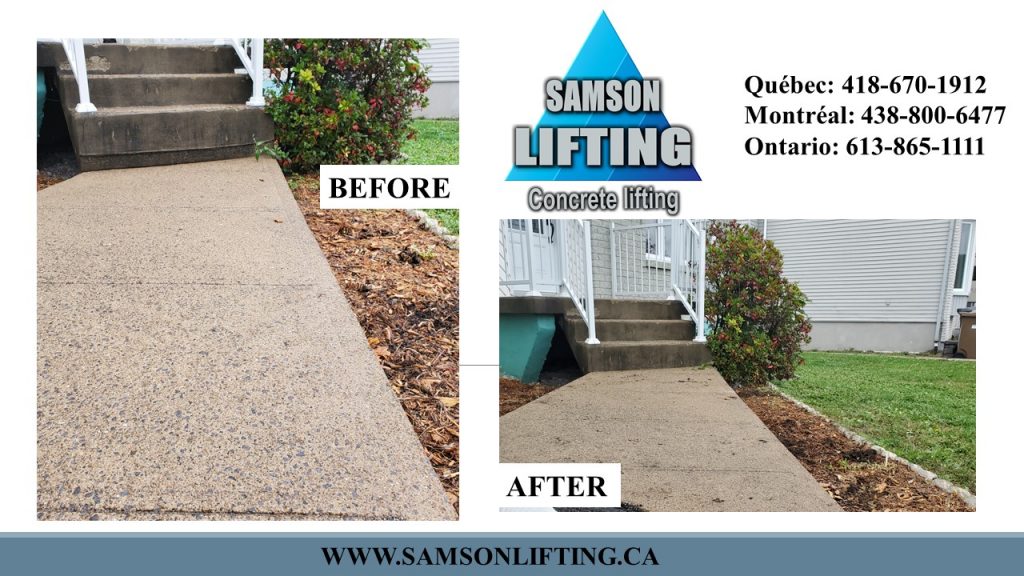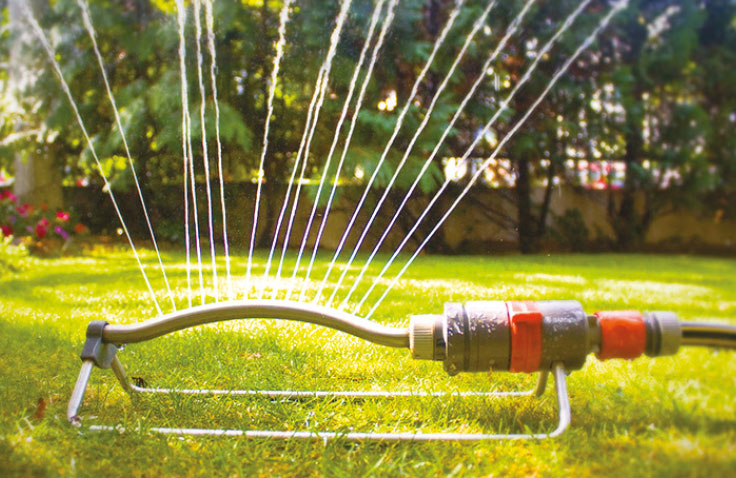Causes of concrete settlement
Why does concrete sag?
Concrete is a heavy material compared to wood. When the material underneath the concrete slab is not load bearing, the concrete slab settles. When part of the concrete slab is supported and the rest is not, the unsupported sections can separate from the rest of the slab by cracking and cause a drop in the slab. The stability of the concrete slab is a result of the quality of the slab on which it is poured. The less quality is neglected, the more stable the concrete slab will remain in the long term.

Depending on where your concrete slab is located, the cause will be different. Here are some of the reasons for a concrete slab or sidewalk collapse
– poor water irrigation (reverse slope)
– insufficient or poorly compacted soil
– construction while the ground is frozen
– unusual weight on the slab (moving)
– unstable or clayey soil
– unwanted animals under the slab
– excavation near the slab or vibration near the slab
– underground pipe breakage
Type of soil
The type of soil under your concrete structures will not necessarily stay in place to provide sufficient support for your concrete slab.
Water can wash away the soil as it moves under your concrete slabs, for example: during a flood. When you have a flood and the water recedes, it takes with it the material under the slab and creates a void. If you have frequent flooding, the concrete may not be supported anymore and the slab will start to sag.
Prevention of Subsidence
There are a number of steps that can be taken to prevent subsidence:
Watering
Frequent and abundant watering is intended to compensate for moisture loss during dry periods and to prevent soil movement. Deep irrigation systems are the most effective, but superficial systems still give satisfactory results.
It should be noted that if the foundation walls of the building are cracked, watering may cause water to seep into the basement. It is therefore important to seal the cracks before watering.

Plant control
Plant control to compensate for dry soil conditions can be accomplished in several ways. The simplest is to provide more watering near the tree by installing an irrigation system. Another option is to prune the tree (cutting back some of the branches) to slow down root growth. However, it is not recommended that more than 20% of the tree’s foliage be pruned or trimmed in one operation. A root barrier can be installed to keep roots away from the foundation. This is a thick fabric buried vertically in the ground to block the progression of the roots. In Quebec, the installation of such a barrier is justified for houses with shallow foundations (some older houses).
When planning to plant trees around the house, it is recommended to avoid very tall species and those that consume a lot of water, such as willow, elm and various species of poplar.
Reducing evaporation
Some buildings are built on a foundation without a concrete slab in the basement, which is called a dirt cellar or crawl space. In this type of cellar, the soil exposed to the air dries out more than the soil outside. When the house is sitting on clay soil, such a house can experience soil subsidence in the center. Therefore, a plastic sheet should be installed on the floor: it will act as a vapour barrier by keeping the moisture in the soil.
We have a fast and economical solution!
Do you need more information on polyurethane injection installation?
We cover the entire province of Quebec and Ontario.
The solution to your sagging concrete problem is at hand! You are not convinced? See our before and after achievements that demonstrate our skills in concrete lifting.
Do you need a quick quote for the straightening of your concrete slab?
